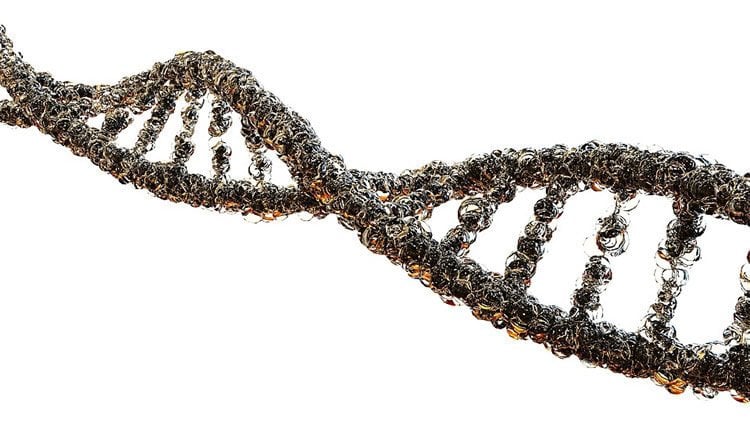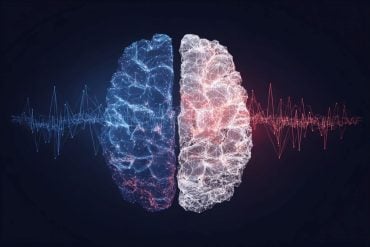Summary: Researchers report the total amount of rare genetic mutations in a person’s genome can explain why those with a disease associated mutation can have vastly different symptoms.
Source: Penn State.
Whether an individual develops a neurodevelopmental disorder like autism or ADHD and the severity of that disorder depends on genetic changes beyond a single supposedly disease-causing mutation. A new study led by researchers at Penn State reveals that the total amount of rare mutations — deletions, duplications, or other changes to the DNA sequence — in a person’s genome can explain why individuals with a disease-associated mutation can have vastly different symptoms. A paper describing the study appeared today in the journal Genetics in Medicine.
“Genetic sequencing tools can reveal a large number of mutations in a person’s genome, but diagnosis typically focuses on identifying one primary mutation as the cause of a disorder,” said Santhosh Girirajan, associate professor of biochemistry and molecular biology and of anthropology at Penn State and senior author of the paper. “However, this strategy does not explain why many individuals with the same primary mutation have very different features or symptoms. For example, when a parent and child have the same primary mutation but only the child develops the disorder. Our work reveals that the primary mutation likely sensitizes a person to a disorder, but the amount of other mutations elsewhere in the genome is what actually determines the cognitive ability and developmental features in that person.”
The research team considered genetic, cognitive, and developmental information from individuals who contained one of two known disease-associated mutations, and of their families. Both mutations are deletions of genetic material on chromosome 16 — one in a region referred to as 16p11.2 and the other 16p12.1 — and are detected in a global screen for children with developmental delays. These primary mutations provide a frame of reference to study the additional mutations that make up an individual’s “genetic background.”
“Ninety-five percent of children who have the 16p12.1 mutation inherit it from their parents, so any difference in clinical features between the parent and child is due to what they have in the genetic background,” said Girirajan.
Individuals with one of the primary mutations who expressed clinical features had significantly more mutations in the genetic background than their parents or siblings who did not express clinical features. The researchers also linked the number of mutations in the genetic background to head size, a feature of cognitive development, in individuals with the primary 16p11.2 deletion and to IQ scores in individuals with one of the two primary mutations or one of several other disease-associated primary mutations.
“This suggests that a child with a higher number of mutations in the genetic background is more likely to develop intellectual disabilities,” said Girirajan. “The more mutations you have, the more different types of combinations you have that can potentially produce clinical features. Most of these mutations in the genetic background are passed on by the parents, and when the parents’ mutations come together in a combinatorial way, the child ends up having more than what either parent had individually. The primary mutation is usually only passed on by one of the parents, and it turns out that the parent who does not pass on the primary mutation actually passes on more mutations in the genetic background. This tells us that getting information about family history, about the parents’ genetic profile, is incredibly useful when trying to make a diagnosis.”
The researchers suggest that the primary mutation sensitizes an individual to a particular disorder and that the genetic background sets the trajectory for potential clinical features.
“Some primary mutations may sensitize an individual to a lesser degree, requiring large numbers of mutations in the genetic background to produce symptoms associated with the disorder,” said Lucilla Pizzo, graduate student in the Molecular Medicine program at Penn State and first author of the paper. “For example, an inherited mutation that has been passed on for many generations may not have produced strong symptoms in the parents or grandparents, but large numbers of mutations in the genetic background of the child could lead to clinical features. Other primary mutations may sensitize the genome to a greater degree, with fewer additional mutations required to produce symptoms associated with the disorder.”

This study focused solely on genetic changes that occurred in the protein-coding portions of the genome. The researchers plan to expand their investigation to the rest of the genome.
Ultimately, the researchers hope this knowledge — and continued studies of how mutations affect specific, measurable traits such as IQ and head size — will change how clinicians obtain genetic data and offer diagnoses to their patients.
“We need more-thorough screens when a patient comes into a clinic so that we can consider more than just one mutation,” said Girirajan. “With knowledge about the family history and genetic background, we can get closer to a more accurate prognosis and provide rehabilitation sooner. For example, a patient could start speech therapy or physical rehabilitation before the developmental delay hits.”
In addition to Girirajan and Pizzo, the research team includes Matthew Jenson, Andrew Polyak, Jieun Yoon, Emily Huber, and Vijay Kumar at Penn State and more than fifty clinicians from the US, Europe, and Australia.
Funding: This work is funded by the National Institutes of Health, the Brain and Behavior Research Foundation, and the Simons Foundation Autism Research Initiative (SFARI). Additional support was provided by the Huck Institutes of the Life Sciences, the Fulbright Commission Uruguay, the Italian Ministry of Health, the Jacobs Foundation, and the Swiss National Science Foundation.
Source: Joel Ranck – Penn State
Publisher: Organized by NeuroscienceNews.com.
Image Source: NeuroscienceNews.com image is in the public domain.
Original Research: Open access research for “Rare variants in the genetic background modulate cognitive and developmental phenotypes in individuals carrying disease-associated variants” by Lucilla Pizzo, Matthew Jensen, Andrew Polyak, Jill A. Rosenfeld, Katrin Mannik, Arjun Krishnan, Elizabeth McCready, Olivier Pichon, Cedric Le Caignec, Anke Van Dijck, Kate Pope, Els Voorhoeve, Jieun Yoon, Paweł Stankiewicz, Sau Wai Cheung, Damian Pazuchanics, Emily Huber, Vijay Kumar, Rachel L. Kember, Francesca Mari, Aurora Curró, Lucia Castiglia, Ornella Galesi, Emanuela Avola, Teresa Mattina, Marco Fichera, Luana Mandarà, Marie Vincent, Mathilde Nizon, Sandra Mercier, Claire Bénéteau, Sophie Blesson, Dominique Martin-Coignard, Anne-Laure Mosca-Boidron, Jean-Hubert Caberg, Maja Bucan, Susan Zeesman, Małgorzata J. M. Nowaczyk, Mathilde Lefebvre, Laurence Faivre, Patrick Callier, Cindy Skinner, Boris Keren, Charles Perrine, Paolo Prontera, Nathalie Marle, Alessandra Renieri, Alexandre Reymond, R. Frank Kooy, Bertrand Isidor, Charles Schwartz, Corrado Romano, Erik Sistermans, David J. Amor, Joris Andrieux & Santhosh Girirajan in Genetics in Medicine. Published September 7 2018.
doi:10.1038/s41436-018-0266-3
[cbtabs][cbtab title=”MLA”]Penn State”Family Genes Vital for Understanding Autism Progression.” NeuroscienceNews. NeuroscienceNews, 7 September 2018.
<https://neurosciencenews.com/genetics-autism-9821/>.[/cbtab][cbtab title=”APA”]Penn State(2018, September 7). Family Genes Vital for Understanding Autism Progression. NeuroscienceNews. Retrieved September 7, 2018 from https://neurosciencenews.com/genetics-autism-9821/[/cbtab][cbtab title=”Chicago”]Penn State”Family Genes Vital for Understanding Autism Progression.” https://neurosciencenews.com/genetics-autism-9821/ (accessed September 7, 2018).[/cbtab][/cbtabs]
Abstract
Rare variants in the genetic background modulate cognitive and developmental phenotypes in individuals carrying disease-associated variants
Purpose
To assess the contribution of rare variants in the genetic background toward variability of neurodevelopmental phenotypes in individuals with rare copy-number variants (CNVs) and gene-disruptive variants.
Methods
We analyzed quantitative clinical information, exome sequencing, and microarray data from 757 probands and 233 parents and siblings who carry disease-associated variants.
Results
The number of rare likely deleterious variants in functionally intolerant genes (“other hits”) correlated with expression of neurodevelopmental phenotypes in probands with 16p12.1 deletion (n=23, p=0.004) and in autism probands carrying gene-disruptive variants (n=184, p=0.03) compared with their carrier family members. Probands with 16p12.1 deletion and a strong family history presented more severe clinical features (p=0.04) and higher burden of other hits compared with those with mild/no family history (p=0.001). The number of other hits also correlated with severity of cognitive impairment in probands carrying pathogenic CNVs (n=53) or de novo pathogenic variants in disease genes (n=290), and negatively correlated with head size among 80 probands with 16p11.2 deletion. These co-occurring hits involved known disease-associated genes such as SETD5, AUTS2, and NRXN1, and were enriched for cellular and developmental processes.
Conclusion
Accurate genetic diagnosis of complex disorders will require complete evaluation of the genetic background even after a candidate disease-associated variant is identified.







